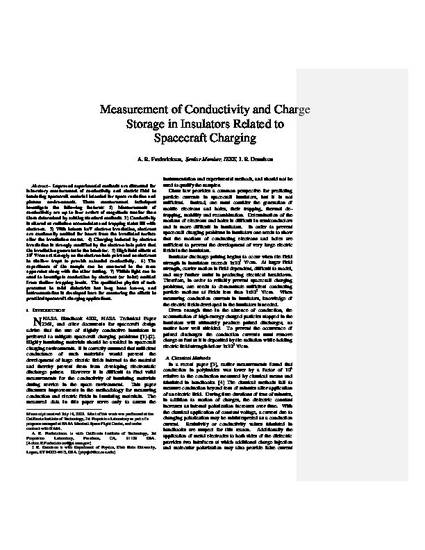
Improved experimental methods are discussed for laboratory measurement of conductivity and electric field in insulating spacecraft material intended for space radiation and plasma environments. These measurement techniques investigate the following features: 1) Measurements of conductivity are up to four orders of magnitude smaller than those determined by existing standard methods. 2) Conductivity is altered as radiation accumulates and trapping states fill with electrons. 3) With intense keV electron irradiation, electrons are continually emitted for hours from the irradiated surface after the irradiation ceases. 4) Charging induced by electron irradiation is strongly modified by the electron-hole pairs that the irradiation generates in the insulator. 5) High field effects at 106 V/cm act strongly on the electron-hole pairs and on electrons in shallow traps to provide extended conductivity. 6) The capacitance of the sample can be measured in the same apparatus along with the other testing. 7) Visible light can be used to investigate conduction by electrons (or holes) emitted from shallow trapping levels. The qualitative physics of such processes in solid dielectrics has long been known, and instrumentation is developed here for measuring the effects in practical spacecraft charging applications.
Available at: http://works.bepress.com/jr_dennison/577/
